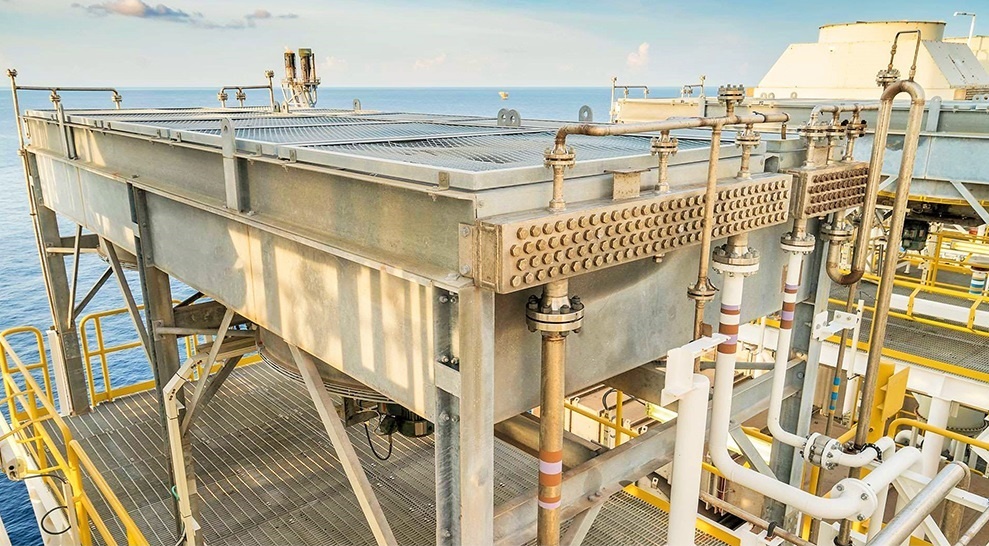Air cooled heat exchanger vs water cooled heat exchanger?
This is a fundamental comparison in engineering. The choice between an Air-Cooled Heat Exchanger (ACHE) and a Water-Cooled Heat Exchanger (WCHE) is a critical design decision with significant implications for cost, operation, and the environment.
Here is a detailed, point-by-point comparison.
Core Concept
- Air-Cooled Heat Exchanger (ACHE): Uses ambient air as the cooling medium, driven by fans across finned tubes.
- Water-Cooled Heat Exchanger (WCHE): Uses water as the cooling medium, typically in a tube-and-shell design, and is part of a larger system that includes a cooling tower, pumps, and water treatment.
Head-to-Head Comparison Table
| Parameter | Air-Cooled Heat Exchanger (ACHE) | Water-Cooled Heat Exchanger (WCHE) |
| Cooling Medium | Ambient Air | Water (circulated through a cooling tower) |
| System Components | Fin-fan tubes, fans, motors, structure. | Shell & Tube HX, cooling tower, water pumps, water treatment system, piping. |
| Initial Capital Cost | Lower for smaller systems or water-scarce areas. | Higher due to more components (tower, pumps, water treatment plant). |
| Operating Cost | Higher energy cost (fans are less efficient than pumps). | Lower energy cost (pumps are more efficient), but adds cost of water and chemicals. |
| Water Consumption | Very Low / Zero. Only used for occasional cleaning. | Very High. Continuous loss from evaporation, drift, and blowdown. |
| Environmental Impact | Large footprint, fan noise. No thermal/chemical water pollution. | Lower footprint, pump noise. Potential for thermal pollution and chemical discharge (blowdown). |
| Cooling Efficiency | Lower. Air is a poor heat transfer fluid. Limited by dry-bulb temperature. | Higher. Water is an excellent heat transfer fluid. Limited by wet-bulb temperature (which is lower than dry-bulb). |
| Approach Temperature | High approach (typically > 10-15°C above ambient dry-bulb) | Low approach (can reach 5°C or less above ambient wet-bulb) |
| Maintenance | Air-side fouling (dust, debris). Cleaning is simpler (air/water lancing). Mechanical maintenance on fans/gearboxes. | Water-side fouling (scale, algae, corrosion). More complex: cleaning tubes, water treatment, tower maintenance. |
| Space Requirements (Plot Plan) | Very Large. Requires significant area at grade level for air flow. | More Compact. Shell & tube HX can be placed in pipe racks; cooling tower footprint is smaller than equivalent ACHE. |
| Reliability & Vulnerability | High. Less auxiliary systems. Vulnerable to air temperature spikes and airborne debris. | Lower. More components (pumps, tower) that can fail. Vulnerable to freezing in cold climates. |
| Process Temperature Control | Less precise due to diurnal and seasonal air temperature swings. | More precise and stable, as water temperature is easier to control. |
| Safety | Safer for flammable/ hazardous fluids. A leak is directly to atmosphere. | Riskier for flammables. A leak could cause a dangerous water-ingress or steam explosion scenario. |
| Climate Dependence | Performance drops significantly in hot summer months. | Performance is more consistent, though it also drops in hot, humid conditions. |
When to Choose Which?
Air-Cooled Heat Exchanger (ACHE)
- Pros:
- Conserves water.
- Simpler system, easier maintenance.
- Lower risk for hazardous fluids.
- No water pollution.
- No freezing issues in cold weather.
- Cons:
- Higher energy consumption.
- Larger plot space requirement.
- Limited by high ambient air temperature.
- Higher noise levels from fans.
- Less precise temperature control.
Water-Cooled Heat Exchanger (WCHE)
- Pros:
- Superior cooling efficiency.
- Lower energy consumption.
- More compact heat exchanger footprint.
- Better and more stable temperature control.
- Generally lower initial cost for large capacities (in water-rich areas).
- Cons:
- High water consumption and cost.
- Complex system with more components to maintain.
- High cost of water treatment chemicals.
- Risk of water-side fouling and corrosion.
- Environmental concerns with thermal and chemical discharge.
